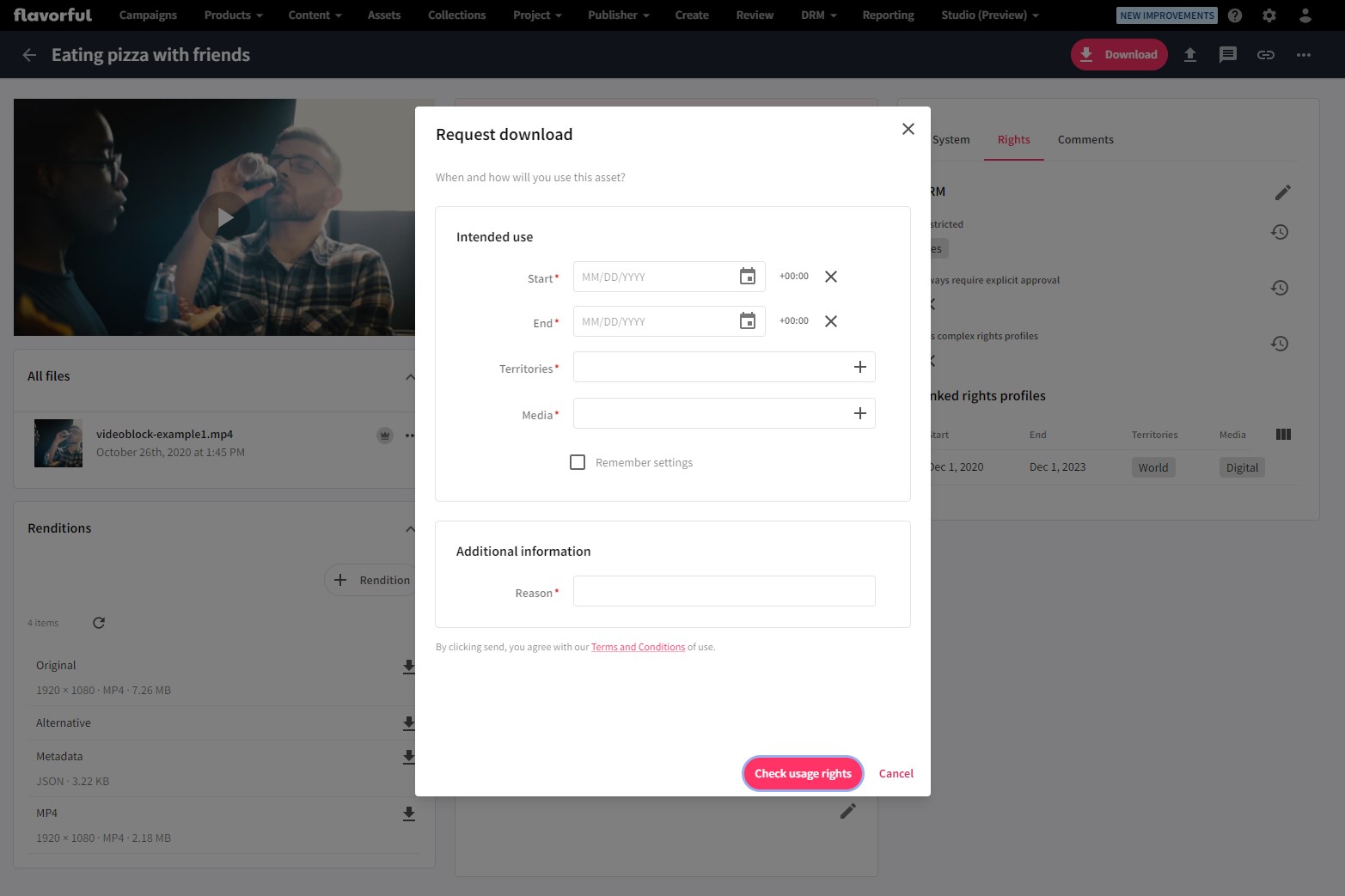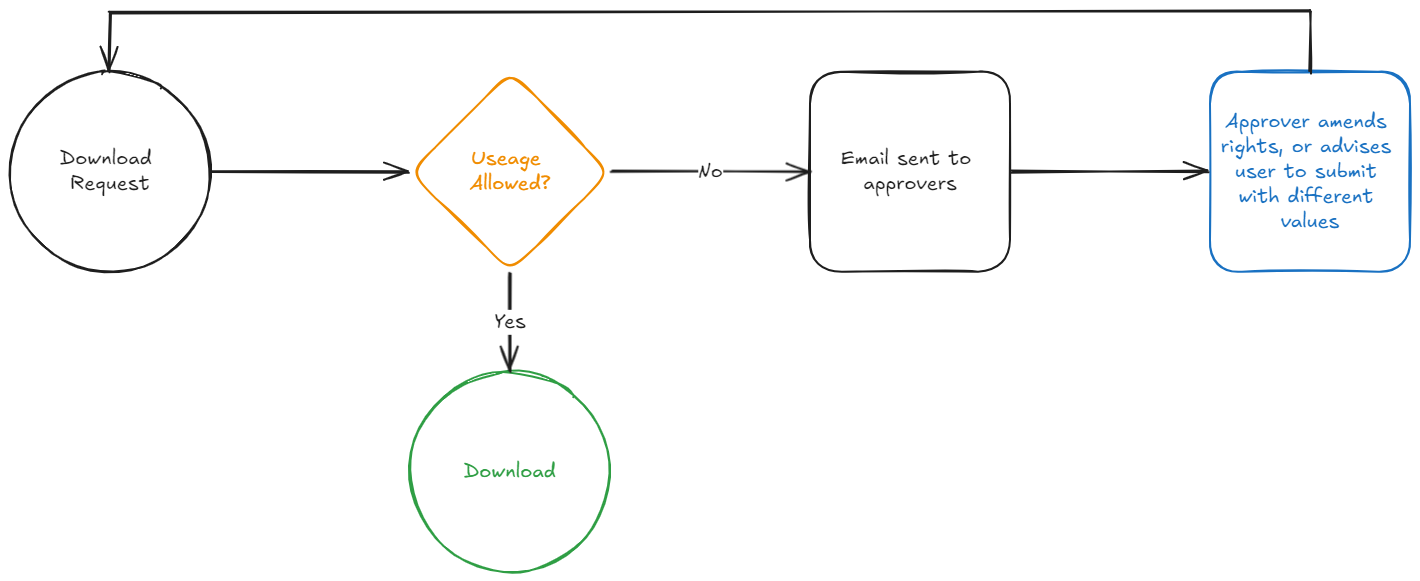How DRM Works in Content Hub
I've seen a lot of questions recently about DRM in Content Hub, so let's break it down! Here's a quick guide on how it works and its key features.
What is DRM?
Think of Digital Rights Management (DRM) as a way to control how assets are downloaded based on their intended use. This could be due to confidentiality agreements, copyright restrictions, or other legal reasons.
Important: DRM doesn't replace Content Hub's security and permissions. It simply prevents unauthorised downloads, not access to view assets within Content Hub.
Understanding the DRM Schema
Within Content Hub, assets with usage restrictions can be linked to "rights profiles," which are then grouped under "contracts." Here's what each element means:
- Contracts: These contain details like the licensor, any specific restrictions, and even attached documents like the contract itself.
- Rights Profiles: Here's where you define usage rights. By default, this includes things like territory (geography), media (channel), and date. But you can customise it further for different usage types.

The DRM Workflow in Action
Imagine you want to download an asset with usage restrictions. You'll be prompted to specify how you plan to use it. If the intended use matches the existing rights profiles, you're good to go! But if not, you can request authorisation.

There are two possible workflows for authorisation: mail or MRM. Which one is used depends on the DrmConfiguration setting (see below).
Mail Workflow

The mail workflow sends a notification email to designated DRM administrators when someone requests to download a restricted asset with a mismatched use case. The email details the asset, the requester, and the intended usage. Here's what the approver can do:
- Approve: Create a new rights profile matching the requested use using the provided link. Once completed, ask the user to resubmit their request for automatic approval.
- Reject: Reply to the email, informing the user of the decision.
- Add a New Rights Profile: If a suitable profile doesn't exist, navigate to the relevant contract (or create a new one) and create a new rights profile. Link the relevant assets to this profile. Then, let the user know to resubmit their download request.

MRM Workflow
The MRM workflow, available with an MRM license, streamlines the DRM authorisation process. When a user requests to download a restricted asset, the following steps occur:
- Request and Verification: The user requests the download, specifying the intended usage. The system checks if the usage aligns with the asset's rights profile.
- Task Creation and Notification: If there's a mismatch, an authorisation request is generated. A new task is created in the Content Hub MRM system, and DRM administrators are notified.
- Review and Decision: Administrators review the request and decide to approve or decline the request.
- Notification and Download: The user receives a notification with the decision. If approved, a download link is provided.

The MRM workflow is particularly useful for organisations with complex DRM requirements or a large number of assets. The MRM workflow can be customised to fit their specific needs, such as defining multi-levels of approvals or introducing automated rules. It also means a detailed record of all requests, approvals, and denials is maintained for compliance and troubleshooting purposes.

DRM Settings
Several values in the DrmConfiguration setting control how DRM works. Here are some common ones:
restrictedRenditions: These are rendition names that require DRM restrictions for download.disablePublicLinksWhenAssetIsRestricted: When enabled, public links for assets with a rights profile become inaccessible.disableDrmInGateway: This setting ensures gateway links within Content Hub are not affected by DRM..showRestrictedAssetsInPublicCollections: When disabled, assets with a rights profile are hidden within public collections..requestFlow: This setting determines the authorisation workflow (Mail or MRM).
#GoForIt
By understanding the DRM workflow and configuration options, you can effectively manage the distribution of restricted assets within Content Hub.
I hope this has been useful!